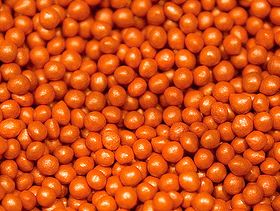 ed area is forecast to increase from 906,000 hectares in 2013 to 930,000 hectares in 2014. Sugar processors’ demand for sugar beets could rise due to possible increases in the price of imported cane sugar (as a result of the weaker ruble). This, coupled with increasing domestic beet prices, is expected to stimulate farmers to increase sown area.
ed area is forecast to increase from 906,000 hectares in 2013 to 930,000 hectares in 2014. Sugar processors’ demand for sugar beets could rise due to possible increases in the price of imported cane sugar (as a result of the weaker ruble). This, coupled with increasing domestic beet prices, is expected to stimulate farmers to increase sown area.Any area expansion, however, will be limited by strong competition for land with grains and oilseeds, especially in high-yielding regions. Beet yields are expected to fall from the record yields of 2013. The depreciation of the ruble is making imported inputs more expensive, and may lead to replacement of more expensive and more efficient seeds, fertilizer and chemicals with cheaper, but less efficient ones. FAS/Moscow forecasts sugar beet yields at 42 MT/HA, which is close to 8-year trend yields but 5 per cent below the record yields of 44.2 MT/HA (harvested area) in 2013.
FAS/Moscow forecasts that 37 MMT of this projected 39 MMT crop will be processed and that production of beet sugar in MY 2014/15 (October 2014 – September 2015) will be the same as in MY 2013/14 – 4.4 MMT. This is approximately 80 per cent of the forecast raw sugar consumption in Russia, and if realized would meet the 80 per cent goal of self-sufficiency stated in Russia’s Food Security Doctrine.
Industry analysts estimate that at present Russian processors are able to process approximately 40 MMT of sugar beets, and because of this they do not envision much expansion of processing facilities. Given continued financial problems and high indebtedness of many companies in Russian agriculture, new investments, if any, in the Russian sugar industry in MY 2014/15 will be directed to the modernization and improvement of existing plants rather than to construction of new facilities.
In 2011 and 2012 Russia produced record sugar beet crops of 47.6 MMT and 45.1 MMT from 1.2 million hectares and 1.1 million hectares, respectively. This production exceeded Russian processors’ demand for sugar beets by approximately 15 per cent, and as a result sugar beet prices plummeted and a significant portion of the sugar beet crop was left unprocessed and lost.
In 2013, although farmers planted only 906,000 hectares to sugar beets, this area was concentrated in large agroholding companies which use modern technologies and improved seeds. Because of this, and favorable weather, yields reached a record and production was at 39 MMT.
The domestic consumption of raw sugar has stabilized in the last 3 years at approximately 5.5 – 5.6 MMT, of which domestic production of raw sugar from sugar beets comprises approximately 80-85 per cent. Per-capita consumption continues to fall gradually, but the Russian population has started expanding again slowly in 2013 after many years of decline.
According to the Russian Union of Sugar Producers (Russian Sugar Union), Russia still belongs to group of countries with high per capita consumption of sugar – 38 kg per capita per year, compared with the world average of 22 kg. However, in the last 10 years the per capita consumption has decreased by 7.5 per cent.
The gap between domestic production of raw sugar and consumption is filled by imports of raw and white sugar (in raw equivalent). FAS/Moscow forecasts imports of sugar at 1.1 MMT, compared to the estimated 1.15 MMT’s imports in MY 2014. This will include 0.8 MMT’s imports of raw cane sugar (the same volume as in 2014), and 0.3 MMT of refined sugar (raw equivalent), compared to 0.35 MMT in MY 2014. Russia’s exports of sugar are forecast at less than 0.05 MMT.
- See more at: http://www.thecropsite.com/news/15967/russias-sugar-production-forecast-to-remain-same-as-last-year#sthash.UYjP936T.dpuf





